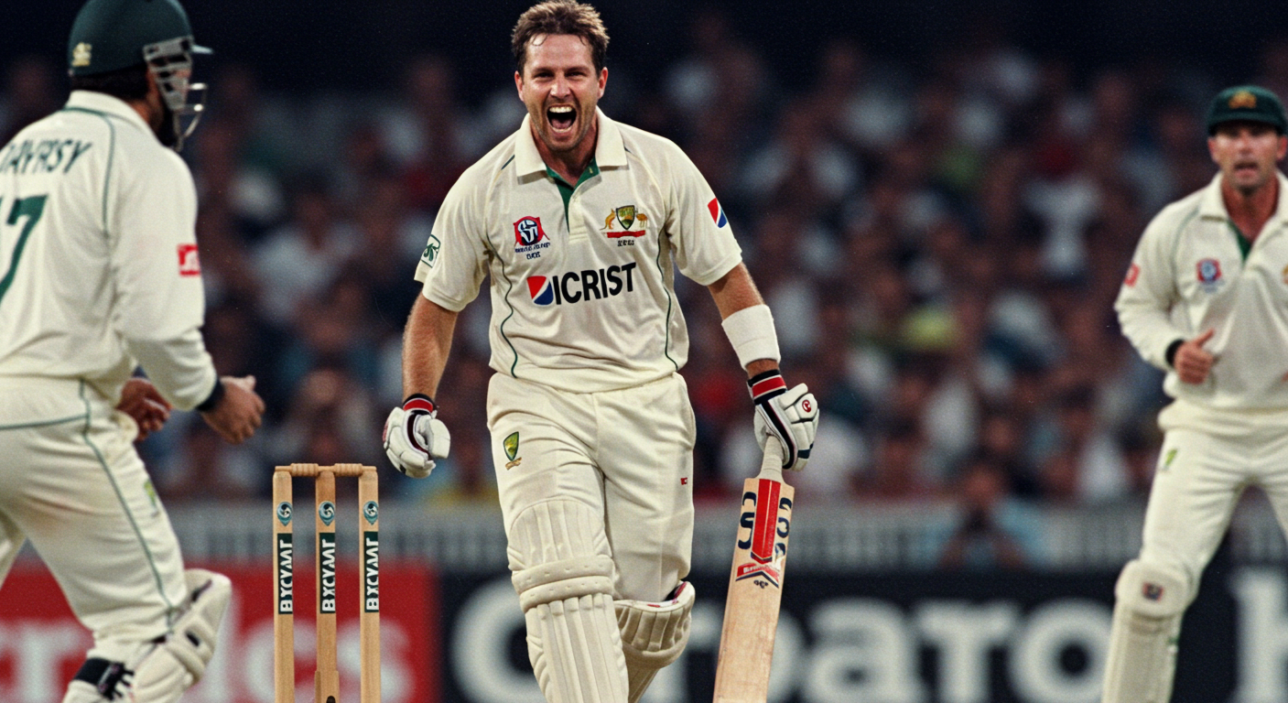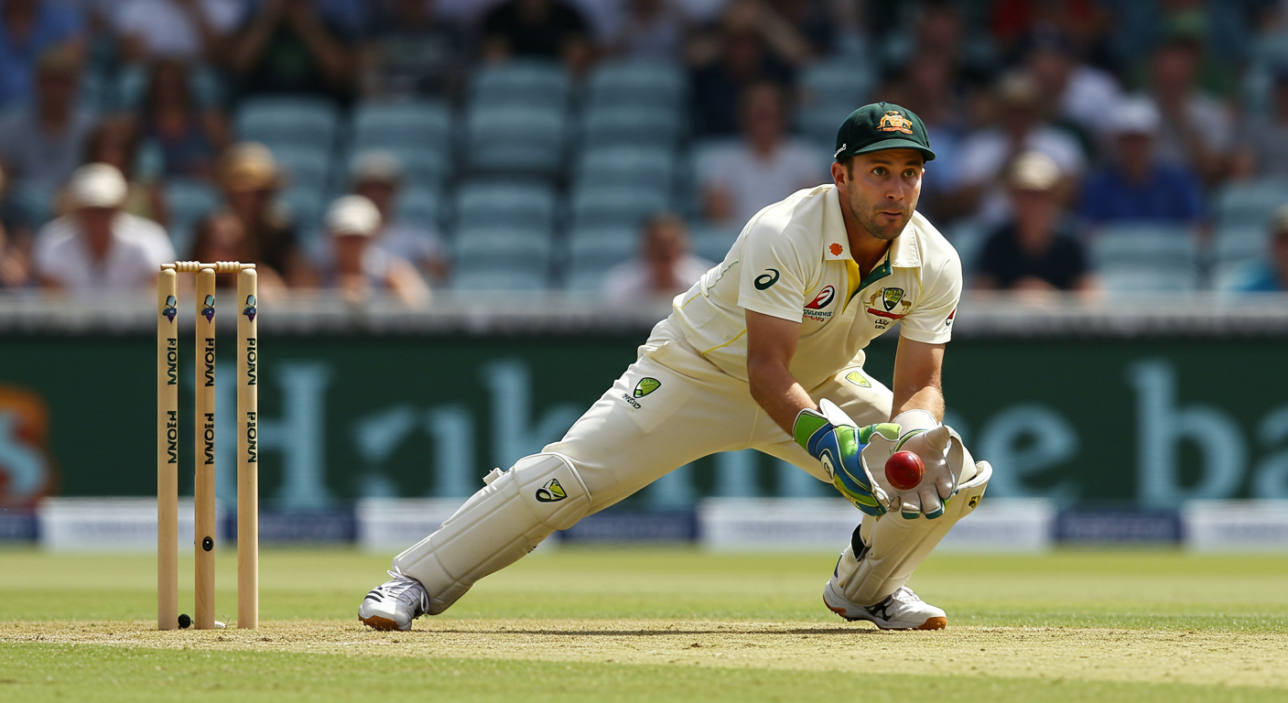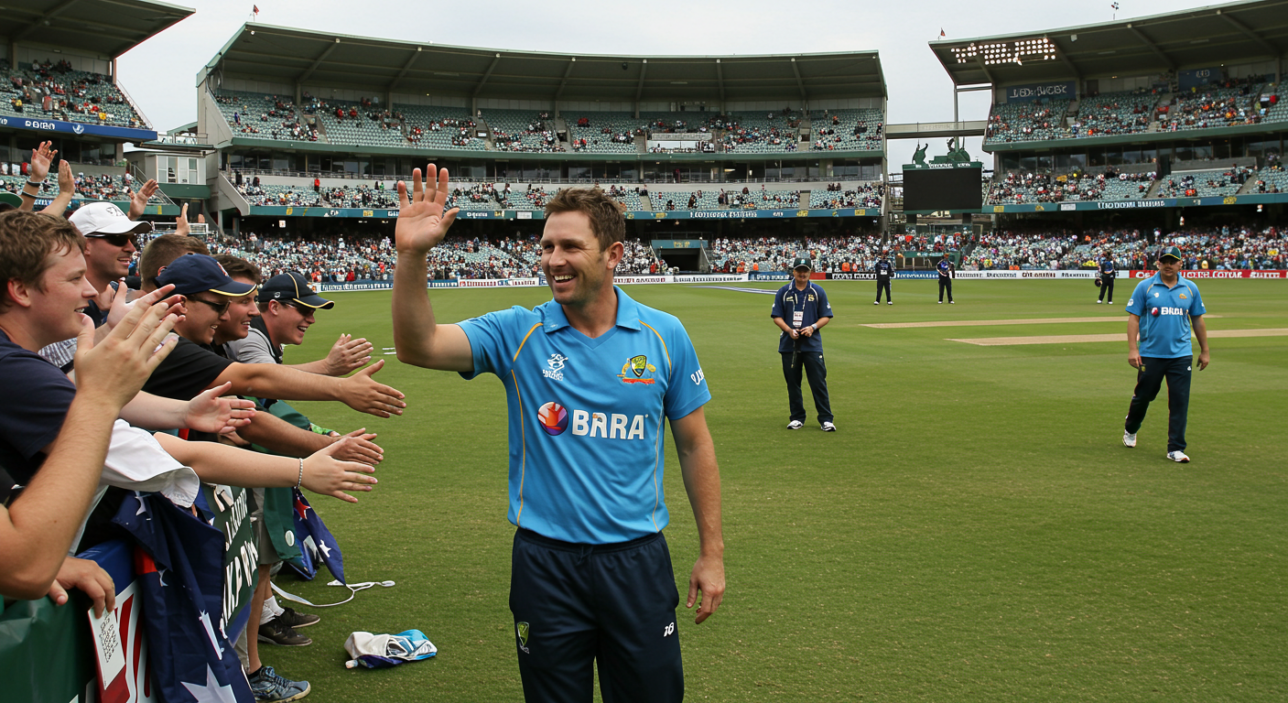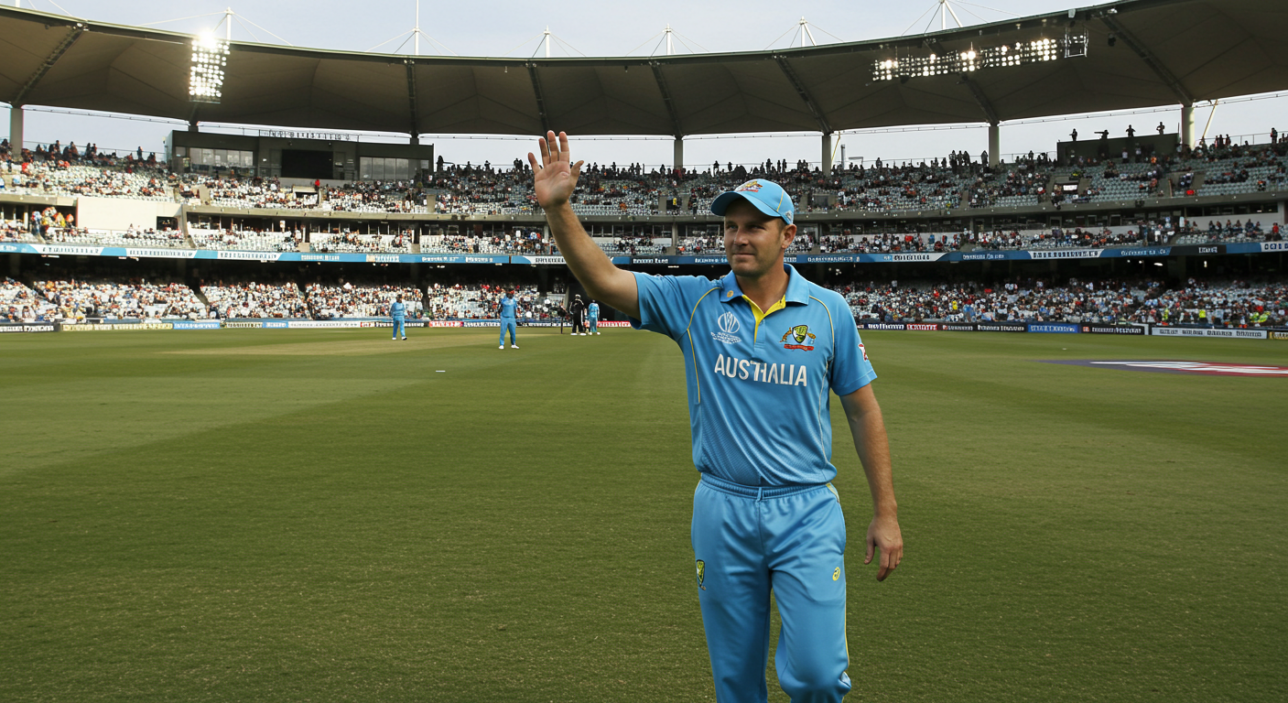
Adam Gilchrist: The Wicketkeeper Who Changed the Game
Before Adam Gilchrist, the wicketkeeper was a specialist role defined by gloves and grit. A neat pair of hands. A patient presence. Maybe a handy lower-order knock if the top seven failed. That was the template—until Gilchrist shattered it with one clean, left-handed swing.
He didn’t just redefine the position. He reinvented its purpose. As a batter, he was explosive—an opener in ODIs who dismantled attacks from the first over, and a No. 7 in Tests who counterpunched when the opposition thought they were on top. As a keeper, he was safe, agile, and economical—rarely flashy, always effective. But it was the combination that changed the game: a genuine wicketkeeper who could average over 47 in Test cricket with a strike rate above 80.
Gilchrist wasn’t the first batter-keeper, but he was the first to dominate in both roles consistently at the highest level, across formats, against every team, in every condition. His impact was immediate, and it rippled across the cricketing world. Suddenly, teams wanted their own Gilchrist. Keeping became an all-round role. Selection criteria changed. Expectations shifted. And there was no going back.
This article explores how Adam Gilchrist reshaped modern cricket—not by being loud, but by being undeniable.
Violence with a Smile

Few players have hit a cricket ball harder than Adam Gilchrist. But what made him unique was the joy with which he did it. There was no malice in his batting. Just clarity. Confidence. Intent. He didn’t just punish bowlers—he dismantled their rhythm.
Whether opening in ODIs or batting at No. 7 in Tests, Gilchrist brought an energy that broke the mould of the careful, tactical innings. He skipped footwork drills and trusted instinct. If the ball was there, he hit it. Hard. Often over midwicket. Sometimes over cover. Always clean.
Opposition captains hated it. Bowlers, especially spinners, feared it. He didn’t need a platform or a long warm-up. He walked in and changed the temperature of a match. One hour of Gilchrist could undo four days of careful strategy.
And yet, he did it all with a grin. He walked when edged, rarely sledged, and often credited others for his innings. That generosity didn’t soften his game—it made it more lethal. There was no ego, no edge—just belief. He played like a man who trusted his game more than the game trusted itself.
In the end, Gilchrist’s greatness wasn’t just in the destruction he caused. It was in the ease with which he made it look possible.
Australia’s Gamebreaker in a Golden Era
In one of the most dominant cricketing sides ever assembled, Adam Gilchrist was the detonator. While the likes of Ponting, Hayden, Warne and McGrath provided structure and sustained excellence, it was often Gilchrist who turned matches into massacres. He wasn’t Australia’s rock. He was the quake beneath the surface—the one who could rip a game open in an hour.
He didn’t play cautious Test innings. He played with the confidence of a man who knew the team behind him was stacked—and the team ahead of him had just taken all the heat. Coming in at No. 7, he punished tired attacks. Often, he arrived when Australia were cruising at 400/5. By the time he was done, the scoreboard read 550/6 and the game was over. His counter-attacking 149 off 104 balls in the 2007 World Cup final against Sri Lanka is still one of the most brutal innings ever played under pressure. In a final. On the biggest stage.
But Gilchrist’s role wasn’t just about hitting. It was strategic. He allowed Australia to play five bowlers without compromising batting depth, something that reshaped the balance of the side. He was the reason they could be aggressive with selection—and aggressive with tempo. Teams chasing 300+ in ODIs knew Gilchrist might take 80 off the first 10 overs, and once that happened, their chance was gone.
His batting made life easier for others too. Hayden could take his time because Gilly flew out of the gates. Middle-order players faced softer balls and looser fields. Gilchrist was the tone-setter in a team full of closers.
His role in Australia’s world dominance can’t be overstated. He didn’t just add flair—he added fear. And in a side full of stars, he was often the one opponents most wanted out.
The Keeper Who Made Glovework an Afterthought

Before Gilchrist, selection committees treated wicketkeeping as a sacred craft. Batting was a bonus. Catching, footwork, reflexes, and voice behind the stumps were everything. But once Gilchrist came along, everything changed. The conversation flipped from “can he keep?” to “can he bat like Gilly?”
What’s often overlooked is that Gilchrist was a very fine wicketkeeper. No, he didn’t have the feline elegance of Ian Healy or the low-to-the-ground crouch of MS Dhoni. But he was dependable, tidy, and entirely unflappable, even standing up to spinners like Shane Warne and Stuart MacGill. His glovework didn’t demand attention—but that was the point. It didn’t need to. He caught what needed catching and rarely dropped what shouldn’t be dropped.
And unlike many keeper-batters who emerged later, Gilchrist didn’t just ride along—he defined the dual-role prototype. For a decade, he was consistently excellent at both. He wasn’t picked for batting and tolerated for keeping. He did both, and he did both like he belonged in the team twice.
What followed was a revolution. Suddenly, every team wanted a Gilchrist. Sri Lanka pushed Sangakkara into gloves. India backed Dhoni. South Africa found Boucher. But none matched the completeness Gilchrist brought—his game wasn’t built to imitate. It was built to last.
He didn’t kill the art of wicketkeeping. He just rewrote its expectations. Permanently.
Ahead of the T20 Curve
When T20 cricket began to take shape in the early 2000s, it needed a certain kind of player. Not just someone who could hit the ball hard, but someone who could read tempo, flatten bowlers without slogging, and create momentum with purpose. What T20 needed, Adam Gilchrist already was.
Before powerplays were formalised and before the concept of strike rates became central to team strategy, Gilchrist was already playing a version of T20 cricket in ODIs. Opening the innings, he would launch into bowlers with an audacity that was almost casual. And unlike many modern hitters, his strokeplay wasn’t built on risk—it was built on instinct and geometry. He knew where the gaps were and didn’t just clear the field—he manipulated it.
So when T20 cricket went global, Gilchrist wasn’t adapting to a new format—he had been rehearsing it his entire career. His 109 in the 2008 IPL semi-final remains a masterclass in how to bat with freedom and discipline in equal measure. Not a single shot felt reckless. Every blow came with clarity.
But perhaps his greatest contribution to the format was psychological. T20 demanded players who weren’t afraid of failure. Gilchrist brought that mindset long before it was fashionable. He freed up teams. He gave permission for aggression. And in doing so, he helped define the attitude that would drive T20 cricket forward.
His legacy in the shortest format isn’t built on stats alone. It’s embedded in how the modern opener bats: fast, fearless, and with a glint of calculation. Gilchrist didn’t learn T20. T20 learned Gilchrist.
Beloved Beyond Borders

Cricket has always had icons. But very few are loved on all sides of a boundary rope. Adam Gilchrist is one of them. Opposition fans clapped for him. Players admired him. Umpires respected him. The media had nothing to dig for. And fans—whether Australian or not—felt they knew him.
It wasn’t just his explosive batting or his big-match record. It was his manner. He walked when he edged the ball—sometimes even before the umpire raised the finger. He took decisions on the field that most would hesitate to in the heat of a contest. And he did it not to prove a point, but because he believed it was right. He didn’t preach sportsmanship—he practised it, quietly and consistently.
Even in fierce contests, he smiled more than he scowled. He joked with wicketkeepers, patted opposition bowlers, and rarely lost his cool. And yet, none of that made him soft. It made him stronger. Gilchrist didn’t need to rattle cages—he just cleared them with sixes.
Post-retirement, he hasn’t chased headlines. He lends his voice when needed, mentors where useful, and carries himself with the same calm conviction that defined his playing days.
In a sport that too often mistakes aggression for character, Gilchrist remains the gold standard of balance: fierce on the field, generous off it.
The Standard Everyone Still Chases
More than a decade since his final international match, Adam Gilchrist’s influence still shapes the role of the wicketkeeper-batter. Nearly every Test-playing nation now expects their keeper to be a game-changer with the bat. Not a bonus contributor. Not a lower-order patch. A genuine match-winner. That expectation began with Gilchrist.
His numbers hold their own in any era: over 5,500 Test runs at an average of nearly 48, with a strike rate over 80. Over 9,600 ODI runs with 16 centuries. And all while standing behind the stumps to Warne, McGrath, Lee and Gillespie—each demanding, each distinct, each requiring poise and precision. No one had ever juggled both roles at that level with such consistency, flair, and humility.
And yet, his legacy isn’t only statistical. It’s philosophical. He altered how the game thought about roles. He showed that wicketkeepers could shape matches, open innings, and finish them too. That you didn’t need to be angry to be aggressive. That power could be joyful. That elite performance didn’t need ego.
Players like MS Dhoni, Brendon McCullum, Jos Buttler, Quinton de Kock—all owe something to the road Gilchrist paved. He gave permission. He proved it could be done. And no one has ever quite done it with his mix of brutality and grace.
Adam Gilchrist: The Keeper Who Freed the Game

There are cricketers who change matches. There are some who change teams. And then there are a few, a very few, who change the shape of the sport itself. Adam Gilchrist did exactly that—not by announcing a revolution, but by embodying one.
He took two specialist roles—wicketkeeper and opener—and performed both with a mastery that forced selectors, coaches, and captains to reconsider the very structure of a playing XI. No longer could teams settle for a glove-first keeper who batted at nine. No longer could they ask their top-order to build slowly. Gilchrist’s presence alone rewrote the rhythm of the modern game.
He was a disruptor, but a gentle one. He didn’t shout. He struck. He didn’t posture. He performed. And he did it with a clarity that elevated everyone around him. His success wasn’t accidental. It was built on vision, self-belief, and the quiet confidence that you can change the game without changing who you are.
Today, as keepers routinely bat in the top six and T20 line-ups search for players who can both anchor and explode, Gilchrist’s blueprint is everywhere. But few carry the complete balance he offered: the devastating bat, the safe gloves, the respectful smile.
In the end, Adam Gilchrist didn’t just change what a wicketkeeper could be.
He changed what a cricketer could be.





